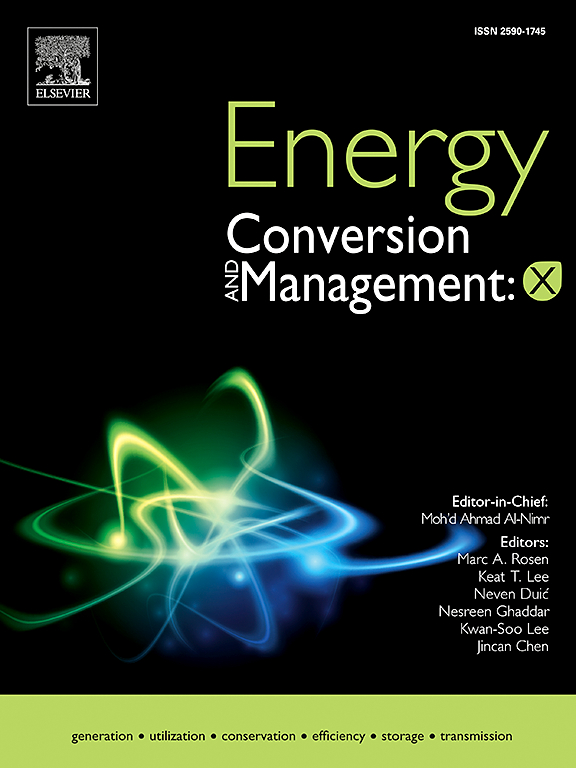Waste eggshell derived CaO/metal-organic framework @LDH for microwave-assisted biodiesel synthesis: Thermodynamics, mechanistic insights and life-cycle cost analysis
IF 9.9
1区 工程技术
Q1 ENERGY & FUELS
引用次数: 0
Abstract
Designing an economical and environmentally friendly catalyst for production of biodiesel is crucial yet a challenging aspect for advancing renewable energy applications. To accomplish this, the present research elucidates the fabrication of a highly efficient novel heterogeneous catalyst by utilizing CaO derived from waste chicken eggshells and a metal–organic framework (MOF)@layered double hydroxide (LDH) (CLD-HK) for the sustainable microwave-assisted transesterification of soybean oil (SO), achieving a biodiesel yield of 99.78 ± 0.6 % within just 60 min. The remarkable catalytic performance is primarily ascribed to the strong basicity of CaO and LDH, along with the unsaturated sites contributed by the MOF, which create accessible active sites for effective substrate adsorption and effective coordination with triglycerides. This synergy results in excellent catalytic performance of the CLD-HK catalyst. Kinetic studies revealed an activation energy of 29.50 kJ/mol, significantly lower than previous reported values, demonstrating high energy efficiency. Various parametric studies revealed that the reaction adhered to pseudo-first-order model with a rate constant of 0.07495 min−1. A plausible reaction mechanism for the transesterification of SO was proposed based on the various characterization results. Furthermore, 1HNMR, 13C NMR, FT-IR and GC–MS analyses validated the conversion of SO to fatty acid methyl esters (FAME), with the produced biodiesel meeting the ASTM standards. The life cycle cost analysis (LCCA) estimated the unit production cost at merely $0.42/kg, highlighting the commercial viability of this biowaste-based catalyst. This approach not only valorizes waste materials but also offers a sustainable and cost-effective alternative to petroleum-based diesel.

求助全文
约1分钟内获得全文
求助全文
来源期刊

Energy Conversion and Management
工程技术-力学
CiteScore
19.00
自引率
11.50%
发文量
1304
审稿时长
17 days
期刊介绍:
The journal Energy Conversion and Management provides a forum for publishing original contributions and comprehensive technical review articles of interdisciplinary and original research on all important energy topics.
The topics considered include energy generation, utilization, conversion, storage, transmission, conservation, management and sustainability. These topics typically involve various types of energy such as mechanical, thermal, nuclear, chemical, electromagnetic, magnetic and electric. These energy types cover all known energy resources, including renewable resources (e.g., solar, bio, hydro, wind, geothermal and ocean energy), fossil fuels and nuclear resources.
 求助内容:
求助内容: 应助结果提醒方式:
应助结果提醒方式:


